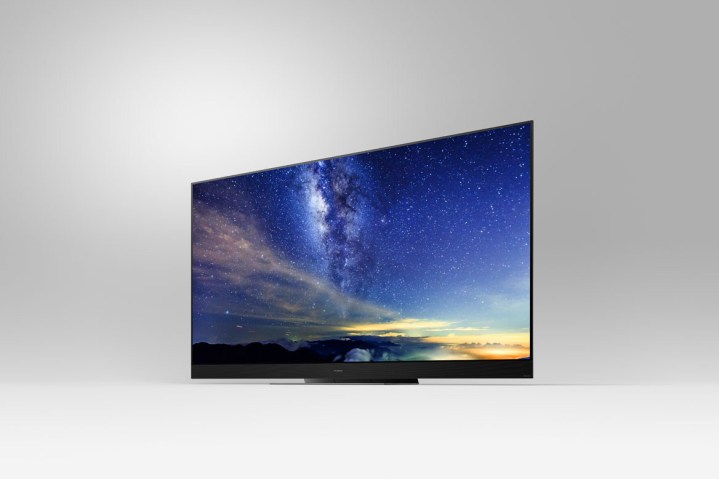
Panasonic, once the undisputed leader in TV quality thanks to its excellent plasma displays, has been all but absent from the American market in recent years. With only LED TV technology left in its display arsenal, after it gave up on plasma, it wasn’t able to compete with the likes of LG and Samsung. But Panasonic is using CES to remind us that it hasn’t been twiddling its thumbs, and is actually making significant strides with OLED. As proof, it’s showing off its brand new 4K OLEDGZ2000, which the company is boldly calling the “world’s most cinematic TV.”
More CES 2019 coverage
- Samsung debuts monster 98-inch QLED 8K TV at CES 2019
- Vizio shakes up its TV lineup, including blazingly bright P-Series Quantum X
- Samsung’s blistering 219-inch Micro LED TV will cook your eyeballs, blow your mind
- LG’s roll-up OLED TV is every bit as magical as you’ve imagined
Though that title may the subject of debate, what’s undeniable is that the GZ2000, which will come in 55- and 65-inch sizes, does sport two truly unique features: It’s the first OLED-based TV to support both Dolby Vision and the HDR10+ formats for HDR content, as well as HLG for still photos. It’s also the first TV of any kind to incorporate two upward-firing Dolby Atmos speakers. It’s hard to say how effective these speakers are at delivering the “height” channels that have come to define both Dolby Atmos and DTS:X, but it’s also hard to imagine they wouldn’t significantly improve the Dolby Atmos effect over those TVs that support Atmos, yet only feature a pair of conventional stereo speakers.
Panasonic is emphasizing how much work has gone into making sure the GZ2000 differentiates itself from OLED brands like LG and Sony, despite the fact that all of the panels come from the same source. Panasonic has hired Hollywood visual wizard Stefan Sonnenfeld to collaborate with its own in-house engineers on the “bespoke Professional Edition 4K OLED” panel to ensure a higher degree of color accuracy and brightness. It has also developed a new version of its image processor, the HCX PRO Intelligent Processor, to manage the panel’s attributes.
On the audio side of the equation, Panasonic looked to its team of Technics engineers to tune GZ2000’s sound. The team embedded Technics’s proprietary JENO Engine, which it claims provides a more accurate, refined sound.
If there’s a weak spot in Panasonic’s triumphant return, it may be the GZ2000’s so-called smart TV interface. Without a powerful OS like LG’s WebOS, Samsung’s Tizen, or even Android TV, its My Home Screen 4.0 UI will likely disappoint users when they get their hands on it. It supports built-in apps for Netflix, Amazon, and YouTube, and gives users more control over the layout — including the ability to add favorite TV channels — but this sounds like it falls way short of the highly sophisticated and app-friendly offerings from other major players.
Despite this lack of an advanced OS, the GZ2000 includes support for Google Assistant and Amazon Alexa, but Panasonic didn’t reveal in its press release exactly how this works. Simply saying it allows “users to operate some key TV functions, just using their voice,” it does not indicate if this is done through a voice-enabled remote, built-in far-field mics, or simply that the TV can pair with Google and Amazon devices like Google Home or Amazon Echo.
There’s no word yet on pricing or a release date, but we think it’s likely that the GZ2000 will occupy the top price points for 4K TVs in its size category. If you live in the U.S. and you want one, you’re going to have to use your movie-making contacts to procure one — in this country, only the Hollywood post-production community will have access to the GZ2000. In Canada, and most other international markets, it will be sold directly to consumers.



